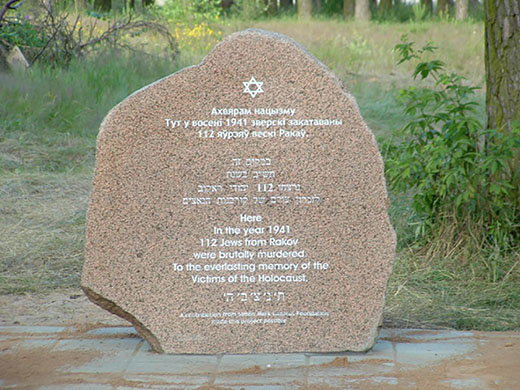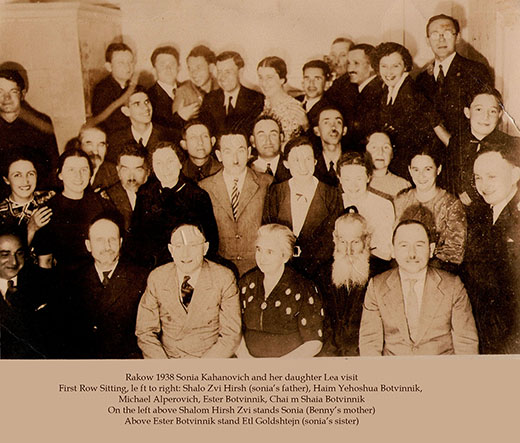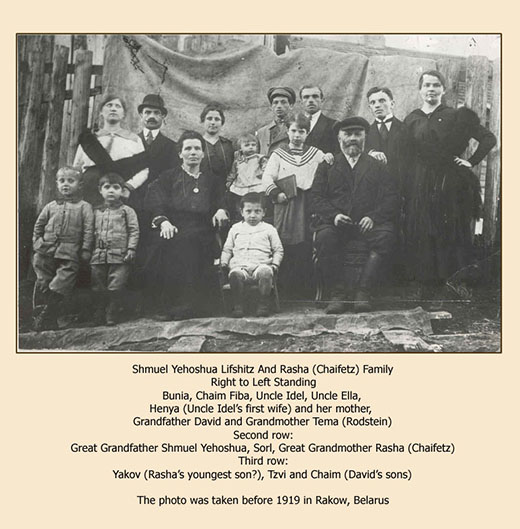HOLOCAUST
Testimony by Uri Finkel ,Translation by Sonia Kovitz
The Occupation by the Germans
and the Life of the Jews in Rakov.
The witnesses on this matter were as follows: the priest Aleksander Hanelsevich; the tailor {…n} Hamaletskii; the female tailor Maria Kosovich-Levkovich; the smith Anton Diertsge from {Vigenich}; Helena Lieshka-Nesterovich.
The Germans entered the shtetl on June 30, 1941. Scoundrels soon turned up among the Catholic population who, with the Germans, beat up the Jews and plundered their belongings. A shtetl located very close to the Soviet-Polish border, on the Polish side, it possessed professional spies, hard-bitten sonim [enemies] of the working people and Soviet rule. These dregs of society were, it is true, uprooted during the two years of Soviet rule [1939-1941], but many of them remained in hiding with the help of poor relatives. During this time they continued in an underground manner their shameful mission on behalf of the master race. These bandits, swindlers, and troublemakers became the Germans’ assistants in ruining and cheating the honest working folk, be they Jews, Poles, White Russians, or Russians.
The local inhabitants Jozef Tsebulski, Michail Melgoi, and Setski were active fascist executioners. During that same period they were in a Polish otryad that did not carry out any missions against the fascists.
For the first three months there was no ghetto in Rakov. The Jews stayed in their houses, but that did not mean that their lives and possessions were not subject to hefker [lawlessness]. Soon they were forced to leave. There was kilkuley bilbulim [destruction and confusion], disorder, pursuit, and the imposing of enormous fines and police sentences that especially affected the poor section of the Jewish population.
In the first days of the occupation 55 Jews were seized, men and women, young people and old people, were led out from the shtetl to the highway. Also two Russians were shot with the Jews: Maketsky and Mikelevich.













